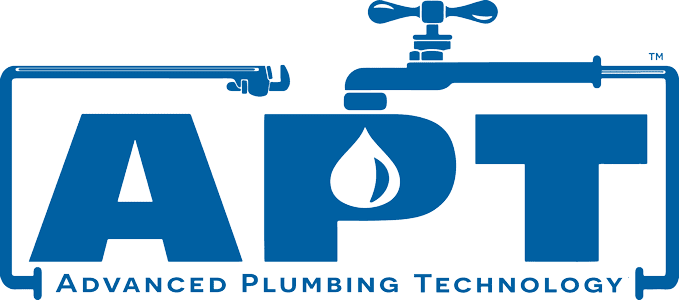DIY Plumbing Safety: Protecting Yourself While Tackling Repairs
September 24th, 2023Posted by Brian Shoemaker
When it comes to home maintenance and repairs, tackling plumbing issues on your own can be a rewarding and cost-effective solution. However, it’s important to prioritize safety throughout the process to ensure you’re not only safeguarding your property but also protecting yourself from potential hazards. At Advanced Plumbing Technology, we understand the desire to take on DIY plumbing projects, and we’re here to provide you with comprehensive guidance on how to handle these tasks while prioritizing your safety.
Preparing for Success: Gathering the Right Tools and Knowledge
Before you embark on any plumbing repair, it’s essential to gather the necessary tools and knowledge. Proper preparation will not only save you time but also minimize the risks associated with DIY plumbing. Research the specific issue you’re dealing with and familiarize yourself with the steps involved in the repair. Consult reputable online resources and guides to ensure you have a clear understanding of the task at hand.
Dress for Safety: Choosing the Right Attire
Protecting yourself from potential hazards starts with wearing the appropriate attire. When engaging in plumbing repairs, opt for clothing that covers your arms and legs to minimize exposure to chemicals, sharp objects, and potential spills. Additionally, wear non-slip shoes to prevent accidents in wet areas. Don’t forget to use safety goggles, gloves, and a dust mask when working with chemicals, debris, or airborne particles.
Shutting Off the Water: A Crucial First Step
One of the first and most critical steps in any plumbing repair is shutting off the water supply to the affected area. This prevents water flow, reducing the risk of accidental flooding and exposure to moisture-related hazards. Familiarize yourself with the location of the main water shut-off valve in your home. In case of emergencies, knowing how to turn off the water quickly can help prevent extensive damage.
Ventilation Matters: Ensuring Proper Airflow
Some plumbing repairs involve working with chemicals or materials that release fumes. To maintain a safe environment, ensure proper ventilation in the area you’re working in. Open windows and doors to promote airflow, and consider using fans to help dissipate fumes. If the repair area lacks natural ventilation, using a respirator or mask with appropriate filters can provide an added layer of protection.
Handling Chemicals Responsibly: Minimizing Health Risks
Certain plumbing repairs require the use of chemicals such as drain cleaners or pipe sealants. While these products can be effective, they also pose potential health risks if mishandled. Always read and follow the manufacturer’s instructions on the product labels. Use these chemicals in well-ventilated areas, wear protective gear, and avoid direct contact with your skin or eyes. After using chemicals, thoroughly wash your hands and any tools you’ve used.
Working with Tools: Using Equipment Safely and Effectively
The right tools can make a significant difference in the outcome of your plumbing repair. However, using tools improperly can lead to accidents. Ensure that your tools are in good condition and appropriate for the task you’re undertaking. Keep sharp tools properly stored and away from children’s reach. When using power tools, follow the manufacturer’s safety guidelines and wear appropriate protective gear.
Electrical Awareness: Avoiding Shock Hazards
Plumbing repairs often involve areas where water and electricity may come into contact. To prevent the risk of electric shock, make sure to turn off the power to any electrical outlets or appliances near your repair site. If you’re unsure about electrical connections or need to work in proximity to electrical components, it’s best to consult a professional electrician to ensure your safety.
Teamwork for Complex Repairs: Seeking Professional Help
While DIY plumbing can be empowering, some repairs are best left to professionals. If a repair involves complex plumbing systems, requires specialized equipment, or poses significant risks, don’t hesitate to seek the expertise of a licensed plumber. Professional plumbers have the experience and knowledge to handle intricate repairs safely and efficiently, ensuring your peace of mind.
First Aid Readiness: Being Prepared for Accidents
Even with all precautions in place, accidents can still happen. It’s essential to have a well-stocked first aid kit on hand in case of minor injuries. Familiarize yourself with basic first aid procedures and know how to address common injuries such as cuts, bruises, or minor burns. If an injury occurs that requires medical attention, don’t hesitate to seek professional medical help.
Post-Repair Cleanup: Ensuring a Safe Environment
Once you’ve successfully completed your plumbing repair, take the time to clean up the area thoroughly. Remove any debris, tools, or chemicals from the vicinity to prevent potential accidents. Wipe down surfaces and ensure that the area is dry and safe for regular use. Proper post-repair cleanup is an often-overlooked step that contributes to overall safety and well-being.
In conclusion, DIY plumbing repairs can be a fulfilling and cost-effective way to maintain your home. By prioritizing safety throughout the process, you can significantly reduce the risks associated with plumbing tasks. Remember to gather the right tools and knowledge, dress appropriately, shut off the water supply, maintain proper ventilation, handle chemicals responsibly, and use tools safely. Be mindful of electrical hazards, know when to seek professional help, and always be prepared with a first aid kit. By following these comprehensive guidelines from Advanced Plumbing Technology, you can confidently tackle plumbing repairs while safeguarding yourself and your property.
